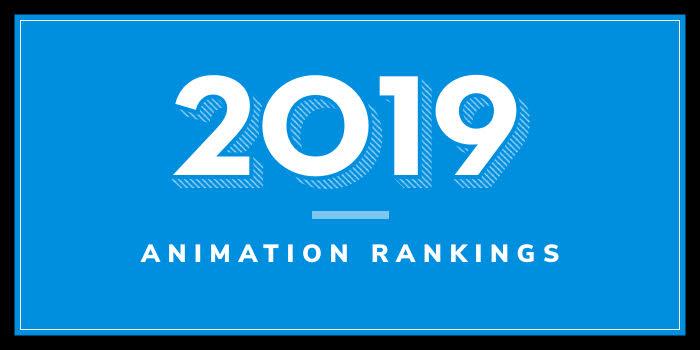
| Ranking | School | City |
|---|---|---|
| 1 | North Carolina State University at Raleigh | Raleigh |
| 2 | University of North Carolina School of the Arts | Winston-Salem |
| 3 | East Carolina University | Greenville |
| 4 | University of North Carolina Wilmington | Wilmington |
Our 2019 rankings of the top animation school programs in North Carolina. For an explanation of the ranking criteria, click here.
 1. North Carolina State University at Raleigh, Raleigh, North Carolina
1. North Carolina State University at Raleigh, Raleigh, North Carolina
North Carolina State University (NC State) was established in 1887 and it serves nearly 35,500 students enrolled in more than 300 degree programs through 12 colleges and 65 academic departments. The College of Design, Department of Art + Design, offers several programs for aspiring animators. Programs include a Bachelor of Art + Design: Animation + Interactive Media, a Masters of Art + Design (MAD): Experimental Media Arts with an Animation and Digital Storytelling Area and a Minor in Art + Design.
Per the school, the undergraduate animation program “gives students the opportunity to learn as they develop their creative portfolios through a wide-range of two-dimensional and three-dimensional traditional materials and computer-based processes.” These include “drawing and illustration, visual composition, soft materials construction, fibers, graphic and interactive narratives, motion graphics, visual effects, animation, web design, game design, interactive and computational media, virtual and augmented reality, 3D modeling, digital fabrication, and more.”
Animation students will take studios that introduce them to Principles of Storytelling, Animation, and Character Design through Sequential Imaging, along with courses such as Digital Imaging, Design Thinking, Advanced Writing, and Drawing. Students will also complete an optional internship and participate in the Art + Designer Showcase.
The MAD program “encourages students to explore the intersection of digital and material technologies to create interactive and engaging experiences that push the boundaries of storytelling, learning and play. The outcome of graduate student work can be the development of creative portfolio works that are backed by rigorous exploration, discovery, and historical and contemporary precedents.”
Graduates of the animation programs at NC State are prepared to work on short and full-length animated films, in character development for animated films, games, and digital storybooks, and on interactive and experimental projects.
 2. University of North Carolina School of the Arts, Winston-Salem, North Carolina
2. University of North Carolina School of the Arts, Winston-Salem, North Carolina
Established in 1963 as the North Carolina School of the Arts, University of North Carolina School of the Arts (UNCSA) is a free-standing campus within the University of North Carolina. The school serves nearly 1,300 students enrolled in dozens of programs through five schools—Dance, Design & Production (includes a Visual Arts Program), Drama, Filmmaking and Music.
The Filmmaking School offers a BFA In Animation that consists of 121 credit hours of study.
Students in the program will take 85 credit hours in Filmmaking, 30 in General Education, and six in Liberal Arts or Designated Arts Course. Course highlights include Fundamentals of Screenwriting, Fundamentals of Sound Design, Introduction to Animation I & II, Intensive Arts, Animations Foundations I & II, Storyboarding I & II, The History of Experimental & Stop-Motion Animation, International Animation, Advanced Computer Animation I & II, and Computer Graphics I & II.
Classes consist of lectures, workshops and individual projects, allowing students to add to their portfolios as they progress through the program. Third year of the program consists of the development, pre-production, production and post-production stages of a three-minute animation project. Students will also begin the development and pre-production phases of the fourth-year animation project. During the fourth year, students may choose independent study or a professional internship.
Graduates of the Animation Program at UNCSA have landed internships at Sony Pictures Imageworks and Stargate Studios and established careers with companies such as Cartoon Network and Prologue Pictures. A recent Animation graduate was honored with a 2015 Emmy Award Nomination for his work on the title sequence for American Horror Story.
 3. East Carolina University, Greenville, North Carolina
3. East Carolina University, Greenville, North Carolina
East Carolina University (ECU) was founded in 1907 as a teacher training school. Today, the school serves more than 29,000, making it the third largest university in North Carolina. East Carolina University offers more than 200 undergraduate, graduate and minor programs through 12 colleges and schools. The College of Fine Arts & Communication houses the School of Art and Design (SoAD), which offers a BFA in Art with an Animation/Interactive Design (AID). Per the school, students in this 126 credit hour program will study fine art as a foundation for AID.
The Foundations curriculum consists of 42 credit hours of study, followed by the 36 credit hour common core. Students can expect to take courses such as Introduction to American and International Film History, Art History Survey, Design Theory Practice, Digital Design, Figure Drawing, and Philosophy of Art.
The AID Concentration consists of 30 credit hours of study. Courses include Advanced Interactive Media, Digital 3D Animation, Digital 3D Lighting and Rendering, Electronic Interactive Multimedia, Intermediate Video Art, Introduction to Digital 3D Modeling and Animation, Introductory Video Art, Motion Graphics Studio, and Professional Practice. Students may choose a minimum of six hours of electives outside the concentration to enhance the degree.
SoAD Animation/Interactive Design students will present a digital senior show for graduation.
 4. University of North Carolina Wilmington, Wilmington, North Carolina
4. University of North Carolina Wilmington, Wilmington, North Carolina
Founded in 1947 as Wilmington College, University of North Carolina Wilmington (UNCW) serves nearly 16,800 students enrolled in 55 undergraduate, 35 graduate, and four doctoral degree programs through six colleges and schools (including the Graduate School and University College). The College of Arts & Sciences houses the Department of Art and Art History, which offers an interdisciplinary Digital Arts Major leading to a BA. A Minor in Digital Arts is also available.
Per the school, the BA program “is designed to prepare students to work in computer-art and design-related fields such as mobile-application and web design, game development, visual effects, film, interactive media, and other emerging opportunities at the cross-section of computer technology and the arts.” Students in the program will also “acquire the background needed to pursue research at the graduate level in areas such as graphics, virtual reality, simulation, and human-computer interaction.”
Concentration options for the Digital Arts Program include Interactive Graphics and Mobile Application and Web Development. Both programs begin with fundamentals in programming, art history, mathematics, data visualization, and elements of art. The programs continue on to the more application-specific areas of animation, computer graphics, graphic design, interactive-media programming, and web development. Aspiring animators typically choose the Interactive Graphics Concentration, which focuses on designing interactive user experiences and 3D graphics for applications such as 3D animation, movie animation, data visualization, digital art, and games.
In addition to the fields mentioned earlier, graduates of the program are prepared to seek positions in animation for studios, special effects for motion pictures, artwork for video game companies, three-dimensional rendering for architects, industrial designers and in any field requiring illustration and visualization.

